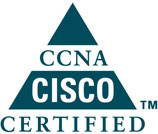Unit 1 - Automated Installation and Virtualization
- Perform an automated installation of Red Hat Enterprise Linux.
- Create a para-virtualized user domain under Xen.
Unit 2 - Package Management
- Manage software on system using yum, Red Hat Network, and rpm.
Unit 3 - Administrative Access and System Services
- Configure and access various consoles.
- Escalate privileges.
- Secure OpenSSH service with keys.
- Manage system logging, printers, task automation and time synchronization.
Unit 4 - System Initialization and Troubleshooting
- Define boot process, recover system, and manage service startup.
- Utilize the rescue environment of anaconda.
Unit 5 - Kernel and Network Configuration
- Explore kernel modules and variants, tune kernel parameters, and manage devices.
- Configure dynamic and static network settings for IPv4.
Unit 6 - Filesystem Management
- Expand storage by adding new filesystems and swap space.
- Configure autofs for on-demand network storage.
- Manage filesystems using Software RAID and Logical Volume Management.
Unit 7 - User Administration
- Create, modify and delete users, groups, and policy.
- Establish collaborative group directories.
- Protect users and groups through ACLs and quotas.
Unit 8 - Advanced Account Management
- Revisit user administration by connecting to network directory services like NIS and LDAP.
- Manage local system security utilizing Pluggable Authentication Modules (PAM).
Unit 9 - Securing Data and SELinux
- Review digital certificates and OpenSSH.
- Implement and troubleshoot Security Enhanced Linux (SELinux).
Unit 10 - Network-level Access Controls: Netfilter
- Protect the system using a packet filtering host-based firewall.
Unit 11 - Service-level Access Controls: TCP Wrappers
- Protect services using TCP Wrappers.
Unit 12 - Web Services
- Configure the Apache web server.
- Extend web server utilizing virtual hosting.
- Configure the Squid web proxy cache.
Unit 13 - Network Infrastructure Servicestrong
- Centralize logging.
- Distribute network addresses with a DHCP server.
- Establish name resolution through caching and slave DNS server utilizing BIND.
Unit 14 - Network File Sharing Services
- Set up an FTP server with vsftpd.
- Share files with an NFS server.
- Network with Windows systems utilizing Samba.
Unit 15 - Mail Services
- Switch MTAs.
- Configure an MTA utlizing postfix.
- Implement mail retrieval using POP3/POP3S/IMAP/IMAPS through dovecot.
If you're interested in building your career then please Contact Us now.



